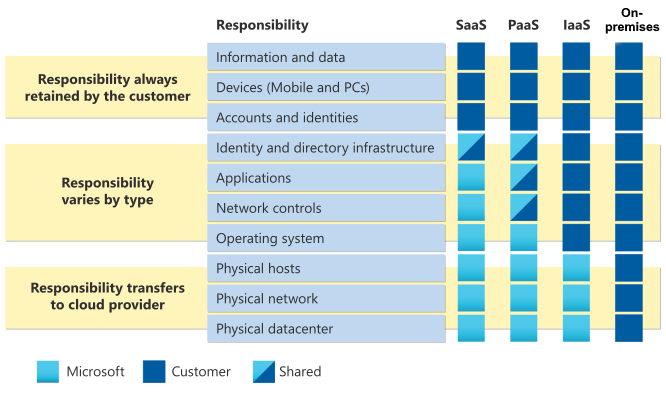Introduction to security for SaaS, PaaS, and IaaS
In this module, you'll learn how to:
- Specify security baselines for SaaS, PaaS, and IaaS services
- Specify security requirements for web workloads
- Specify security requirements for containers and container orchestration
The content in the module helps you prepare for the certification exam SC-100: Microsoft Cybersecurity Architect.
Prerequisites
- Advanced experience and knowledge in identity and access, platform protection, security operations, securing data, and securing applications.
- Experience with hybrid and cloud implementations.
Shared responsibility in the cloud
As you consider and evaluate public cloud services, it’s critical to understand the shared responsibility model and which security tasks are handled by the cloud provider and which tasks are handled by you. The workload responsibilities vary depending on whether the workload is hosted on Software as a Service (SaaS), Platform as a Service (PaaS), Infrastructure as a Service (IaaS), or in an on-premises datacenter
Division of responsibility
In an on-premises datacenter, you own the whole stack. As you move to the cloud some responsibilities transfer to Microsoft. The following diagram illustrates the areas of responsibility between you and Microsoft, according to the type of deployment of your stack.

For all cloud deployment types, you own your data and identities. You are responsible for protecting the security of your data and identities, on-premises resources, and the cloud components you control (which varies by service type).
Regardless of the type of deployment, the following responsibilities are always retained by you:
- Data
- Endpoints
- Account
- Access management